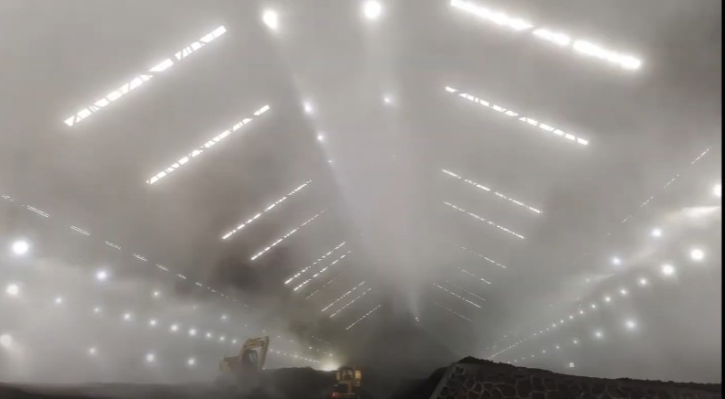
High-Pressure Nozzles
High-Pressure Nozzles: Technical Specifications and Applications

High-pressure nozzles are commonly used for cleaning, cooling, painting, irrigation, and other industrial applications by spraying liquid (usually water) under high pressure. The technical specifications of these nozzles directly affect the efficiency and effectiveness of the application. Below are numerical data and detailed explanations of the characteristics of high-pressure nozzles.
Technical Specifications of High-Pressure Nozzles
1. Pressure Range:
High-pressure nozzles are typically designed to operate between 100 bar (1450 psi) and 1500 bar (21750 psi).
For some industrial and cleaning applications, these nozzles can also be used at higher pressure levels, such as 2500 bar (36250 psi).
2. Flow Rate:
The flow rates of high-pressure nozzles typically range from 5 L/min to 3000 L/min.
For example, a nozzle operating at 1500 bar can spray up to 10 liters of water per second.
Average Flow Rate: Adjustable between 10 L/min and 1500 L/min, depending on the application.
3. Droplet Size:
High-pressure nozzles create very fine droplets when atomizing the liquid.
Droplet Size: Can be between 10-200 microns (µm), meaning the droplets are quite small. This allows the liquid to be evenly distributed over a wide area.
Atomization Rate: High-pressure nozzles can atomize water into droplets as small as 30 microns. This type of atomization provides very effective wetting and cleaning.
4. Spray Pattern:
High-pressure nozzles can spread the liquid in different ways:
Full Cone: 360-degree spread.
Straight Jet: Liquid spreads in a single line.
Fan Shape: Fan-shaped spray that spreads over a wide area.
5. Outlet Pressure:
The outlet pressure of high-pressure nozzles typically ranges from 100 bar (1450 psi) to 1500 bar (21750 psi).
The outlet pressure determines the speed of the liquid entering the nozzle and directly affects the quality of atomization.
6. Material:
High-pressure nozzles are usually made of durable materials such as stainless steel, ceramic, and tungsten carbide.
Stainless steel nozzles provide high corrosion resistance.
Ceramic nozzles are resistant to abrasive liquids.
7. Orifice Diameter:
The orifice diameter of high-pressure nozzles typically ranges from 0.1 mm to 3 mm.
Small diameter nozzles can produce finer atomized liquids, while large diameter nozzles spray liquid over wider areas.
8. Operating Temperature:
Most high-pressure nozzles can operate between -20°C and +180°C.
Temperature can affect the viscosity and atomization of the liquid. Cold water usually atomizes better.
9. Outlet Speed:
Outlet speed indicates how fast the nozzles can spray the liquid. High-pressure nozzles can typically spray between 5 liters and 3000 liters of water per second.
Example: A nozzle operating under 1000 bar (14500 psi) pressure can spray 50 liters of water per second.
Application Areas and Efficiency
High-pressure nozzles are used in various industrial applications. Below are numerical data showing in which areas these nozzles are used and their efficiencies:
1. Cleaning Applications:
Pressure: Varies between 100 bar (1450 psi) and 1500 bar (21750 psi).
Flow Rate: 10-1000 L/min.
Efficiency: High-pressure nozzles make the cleaning of dirt and oils 80-90% more efficient.
2. Irrigation:
Pressure: Varies between 50 bar (725 psi) and 150 bar (2175 psi).
Flow Rate: 20-500 L/min.
Droplet Size: 50-100 microns.
Efficiency: Can save up to 90% water.
3. Painting:
Pressure: 150 bar (2175 psi) to 500 bar (7250 psi).
Flow Rate: 50-500 L/min.
Atomization: Droplet size between 10-100 microns.
Efficiency: The smoothness of the painting process can be increased by 90%.
4. Cooling Systems:
Pressure: 50 bar (725 psi) to 250 bar (3625 psi).
Flow Rate: 50-1000 L/min.
Efficiency: Cooling efficiency can be increased by 30-40% with nozzles.
5. Fire Extinguishing:
Pressure: 100 bar (1450 psi) to 1000 bar (14500 psi).
Flow Rate: 10-2000 L/min.
Efficiency: Fire extinguishing effectiveness can be increased by 50-70% with high-pressure nozzles.
Conclusion
High-pressure nozzles have a wide range for different applications and play an important role in increasing the efficiency of each application. Factors such as nozzle pressure, flow rate, droplet size, and material type determine the efficiency of the nozzle to be selected. Choosing the right nozzle optimizes the success of the application and liquid usage.










